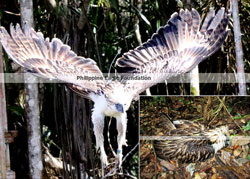PHILIPPINES DECRIES LACK OF FINANCIAL COMMITMENT IN THE DRAFT PARIS DEAL

PARIS - With only a few days left before the historic UN climate change conference ends, the Philippines has called on other countries for failing to include crucial adaptation finance in the current draft of the Paris agreement.
"The Philippine delegation is seriously concerned about the fact that there is not enough provision in the draft Paris agreement that provides adaptation finance for the developing countries most vulnerable to the adverse effects of climate change,” Environment Secretary Ramon J.P. Paje said during a high-level meeting held in Le Bourget on December 8.
More than 190 countries have embarked on two weeks of negotiations to hammer out a new universal climate pact that will specify tracks of finance, mitigation and adaptation actions from 2020 and beyond.
Even after the first week of the talks have ended on December 5, there remains no clear language capturing the mobilization of adaptation funds for countries most vulnerable to climate change.
Paje pointed out that there was no reference to the amount of finance needed for adaptation in Article 6, which covers the element of finance in the new climate deal.
“My delegation hereby further intervenes to ensure clear reference to a collective target for adaptation," the environment chief told the assembly.
Paje said there should be a collective target for adaptation with a “solid quantitative goal,” or a particular amount for adaptation finance that should be reviewed every five years.
According to Paje, predictable financing sources are critical for the implementation of initiatives like technology transfer and capacity-building innovations to enable the country to adapt effectively to climate change impacts.
At the same time, Paje said actions that will limit global warming to below 1.5 degrees Celsius, which now enjoy the support of 112 nations, must be fast-tracked and sustained despite the setback caused by the failure of countries to agree on the review of the 2-degrees Celsius goal.
Such review would have provided scientific evidence for the necessity of increasing mitigation targets, he said.
The Climate Vulnerable Forum (CVF), an advocacy coalition of 43 middle income and developing small-island nations led by the Philippines, has pushed for the continued adoption of 1.5-degrees Celsius goal even after the setback.
Paje also emphasized that the climate crisis does not spare anyone and will impact all countries whether developed, developing or least developed.
Thus, he said, it is important for the 195 territories participating in the negotiations to work in solidarity in establishing the loss and damage mechanism, increasing national mitigation actions and accelerating capacity development for adaptation.
The Philippine delegation, through its lead negotiator Climate Change Commissioner Vice-Chair Emmanuel de Guzman, ensures that the initiatives of the Philippines on behalf of the highly-vulnerable countries comprising the CVF, are strongly reflected in the Paris agreement.###
Link to video of Sec Paje
- Details
- Parent Category: News & Events
- Category: Press Releases


 The Philippines is playing host to a regional meeting tackling best mining practices in East and Southeast Asian regions.
The Philippines is playing host to a regional meeting tackling best mining practices in East and Southeast Asian regions.

